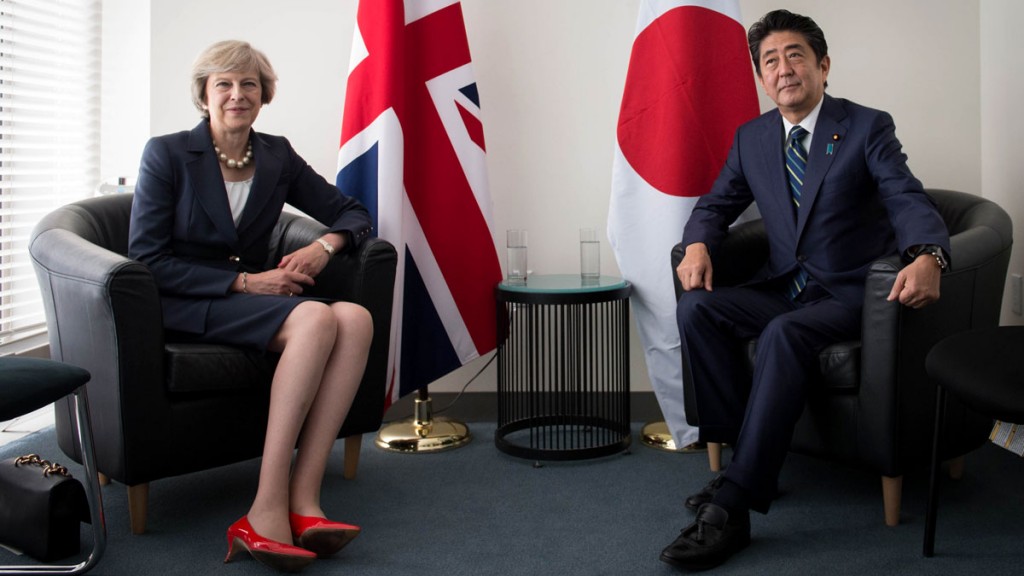
This week, markets were all holding their breath for what the US Federal Reserve and the Bank of Japan would do.
As it turned out, they didn’t do anything quite as radical as anyone had feared or expected. The Fed didn’t raise rates. The Bank of Japan didn’t explicitly launch helicopter money.
Yet I think this week might have marked a turning point.
It looks as though central banks have finally decided that it’s time for them to rope governments into doing some serious “fiscal stimulus”…
Central banks are handing over the baton
As the FT puts it this morning, “for more than half a decade a single opinion has prevailed in the markets: the responsibility for boosting demand will solely fall to central banks as governments cut spending – making safe government debt scarce and pricey.”
But that’s changing now. All the talk among the great and the good – of global institutions such as the International Monetary Fund, for example – is of how governments should be “taking advantage of low rates” to borrow as much as possible and splash out on infrastructure and the like.
Everyone expects Britain’s chancellor Philip Hammond to loosen the purse strings when the Autumn Budget comes out. In the US, Donald Trump and Hillary Clinton don’t agree on much, but neither of them is worrying about the national debt. They’re both keen to gear up and spend more. That’s probably why the Federal Reserve is keen to hang fire on interest rates until the US election is over – it wants to see exactly how much “stimulus” the government is going to do.
And then we’ve got Japan. I discussed the Bank of Japan’s monetary policy shift here after it happened on Wednesday. The big change was that – rather than launch anything apparently radical like helicopter money – the BoJ decided to keep the ten-year Japanese government bond rate wedged at 0%.
As Capital Economics has pointed out, this is a potentially interesting move for the longer term. Firstly, it makes it pretty easy for the government to spend what it wants if it can borrow at a guaranteed 0% – “even if this remains anathema to policymakers for now.”
Secondly, it offers Japan a pretty easy route out of its huge debt pile, assuming that it does manage to generate inflation. “Such financial repression was successfully employed in the US after WW2.”
We’ve already pointed out several times that the only palatable (from a political point of view, at least) way out of our current financial predicament is to inflate away the debt piles in the public and private sectors. The way to do that is to keep interest rates below the level of inflation for a prolonged period of time.
In effect – and I’m not sure that markets have necessarily woken up to this yet, because they assume that Japan is beyond repair – the Bank of Japan has this week written the government a blank cheque in a surprisingly blatant way.
The BoJ is actually committing to holding ten-year rates at 0%. In other words, the BoJ will buy or sell ten-year bonds to keep rates at 0% until inflation is persistently above 2%.
So if the Japanese government wants to borrow a load more money, it can be confident that even if there are no other buyers, it’ll be able to issue debt and have the BoJ take it off its hands. And clearly, the BoJ is a buyer with unlimited appetite and capacity, because it can just print the money as it wishes.
I mean, who needs a zero-coupon perpetual bond (one that is never called, and requires no interest payment) if you have a lender who will always allow you to roll over your zero-coupon ten-year debt when it falls due?
I may be missing some semantic or market technical issue here (I’ll look into it more) but actually what the BoJ did this week might turn out to be a lot more radical than anyone first thought – though it does rather depend on what the Japanese government does with it.
What to invest in if bond prices have peaked
The tricky thing of course, is that if fiscal stimulus works, it “would send bond prices tumbling”. Because if it “works’, inflation and growth will pick up, and no one will want to be sitting in a government bond yielding 0% or less.
This is why I find the BoJ’s move to cap long-term yields interesting. It’s as though they realise that bond prices may be peaking and it’s now time to get policies installed to defend against what could happen if bond prices actually crashed.
But central banks can’t necessarily cap every yield, or pump unlimited money into every market. So what does this mean for investors? Louis Gave of Gavekal recently pointed out that “a cracking up of the bond bubble is broadly bad news for investors… as yields start to move higher, where can investors hide?”
In the early stages, and assuming that yields don’t rocket, there could be opportunities. Stockmarkets in general look fully valued. However, there are some cheap-looking areas. Financials (that might surprise you) – banks and insurers, energy stocks and emerging markets “are all trading at relatively attractive valuations”, compared both to history and to other asset classes.
Indeed, value investors – who have taken a serious kicking over the last five years, as momentum has ruled the roost – seem “likely to enjoy their next few months in the sun”.
Interestingly, my colleague Charlie Morris over at The Fleet Street Letter has been warning of this precise turn over the past few months. Charlie has already set out his stall on how to play it – you can find out more about his take and The Fleet Street Letter here.